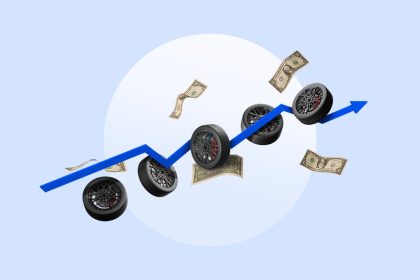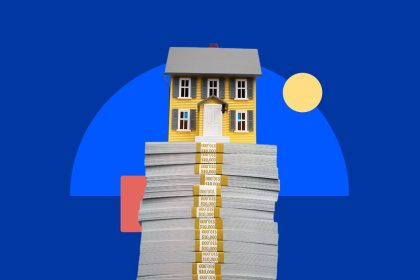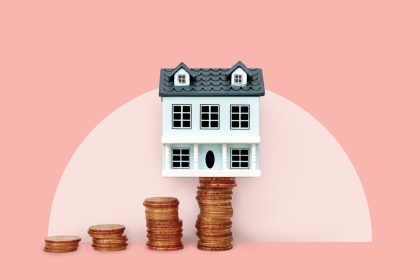Key takeaways
- Personal loans provide fixed rates and stable monthly payments.
- The most common reason to take out a personal loan is to consolidate debt.
- Fast funding times make personal loans a good choice for some emergency expenses or large purchases, as long as you have a low debt-to-income ratio and steady income.
Personal loan interest rates are often lower than credit card rates, and they provide a predictable monthly payment and fast funding – sometimes the same day you apply. While you’ll need to qualify to get a personal loan, these financial products can help you meet other goals. That’s because you can use them for just about any purpose, including the following 10 popular reasons.
10 reasons for personal loans
Personal loans’ fixed rates and stable monthly payments may be more budget-friendly than other types of debt. Quick funding is also a plus if you’re facing an unexpected expense you need to pay for right away. Before shopping for a personal loan, consider these 10 reasons it might be a good fit for you. Be sure to weigh personal loan pros and cons before you make a final decision.
1. Debt consolidation
Debt consolidation is one of the best reasons for taking out a personal loan. Instead of making payments on multiple other loans or credit cards, you can combine them into a single loan with one monthly payment. The interest rates are fixed, making your payment predictable compared to variable credit card rates, and you have a definite payoff date because personal loans are paid in equal installments.
Rhys Subitch, a senior editor of consumer lending at Bankrate, got a personal loan to consolidate their credit debt and was able to reduce their monthly payment by half — even with paying extra toward their debt each month.
“I chose a five-year term, but have been paying more than the amount due each month to chip away at the debt a little more,” they say. “I’m also set to pay off my debt much sooner than if I had kept trying to pay down the credit cards.”
With the average personal loan interest rate just above 12 percent (compared to 21 percent average credit card rates), you could save hundreds or even thousands of dollars. This can help you pay off your credit debt faster — good news for the 46% of credit cardholders who report carrying a credit card balance, according to Bankrate’s 2025 Credit Card Debt Survey.
I was tired of juggling three payments and APRs over 20 percent, and a personal loan helped me [avoid] that.
— Rhys Subitch
Bankrate senior editor, consumer lending
High credit card APRs can keep you in debt much longer, especially if you only make the minimum payment. You’ll also pay thousands more in interest. Consider the following example: You have two credit cards and a total balance of $12,000. By paying off those cards with a debt consolidation loan, you’d save money each month, pay off your debt significantly sooner and save more than $15,000 in interest charges.
| Debt product | Debt amount | Interest rate | Minimum monthly payment | Repayment time | Total interest paid |
|---|---|---|---|---|---|
| Credit card 1 | $5,000 | 21 percent | $138 | 279 months | $8,125 |
| Credit card 2 | $7,000 | 21 percent | $193 | 313 months | $11,625 |
| Debt consolidation loan | $12,000 | 12 percent | $267 | 50 months | $4,016 |
2. Home improvement projects
Homeowners who don’t want to borrow against their home’s equity can use a personal loan for home improvements. It’s also a good fit for borrowers who lack sufficient equity to obtain a home equity line of credit (HELOC) or home equity loan.
Finance writer Kat Tretina used a personal loan to cover the cost of updating her backyard, including the installation of a new fence and landscaping. “I considered using a credit card, but with the high APRs on credit, I decided against them and opted for a personal loan instead,” she says.
While the loan funded her yard project without sky-high rates, she does warn that the ease of access of personal loan funds can make it tempting to borrow more than you need.
Personal loans make it easy to take out a lump sum, and it can be tempting to borrow more than you strictly need. That can lead to unnecessary spending (or you might start thinking about other renovations you could make!) and added interest charges. Have a budget for your home renovations and stick to it.
— Kat Tretina
personal finance writer
When are personal loans better than home equity products?
Unlike home equity products, personal loans don’t usually require you to use your home as collateral. Bad credit personal loan options are also available for borrowers with scores below the 620 minimum standard set by most home equity lenders. Personal loan funding times are usually quicker and involve less paperwork than home equity financing, making them a better way to finance small renovations or repairs. And if you have excellent credit, the best home improvement loan rates may be as low as home equity loans, although the repayment terms will be shorter.
3. Emergency expenses
Borrowers often turn to personal loans to cover emergencies. Some lenders even offer same-day funding if you apply early enough on a weekday. That can make it a good match for a surprise medical bill or expensive car repair without depleting your savings account. Emergency personal loans are much faster alternatives to home equity financing if you have a household crisis, such as a burst water pipe or a roof leak. Since the loan isn’t secured by your home, the approval process is much faster.
You may opt to split the cost of an emergency expense between a personal loan and your emergency savings account. You may sleep better knowing you still have some cash in the account and will have a smaller personal loan balance to pay off.
Bankrate tip
When considering an emergency loan, it is best to compare different options and pay close attention to the funding timeline and acceptance criteria.
4. Medical bills
In 2024, more than 31 million Americans — even those with health insurance — needed to borrow money to pay for healthcare, according to a survey from West Health and Gallup. Collectively, this group borrowed about $74 billion.
If you have medical debt, especially from multiple collectors, you could use a personal loan to consolidate and repay the debt. The interest rate on the loan may be lower and offer more flexibility. A personal loan could also be used to cover upcoming procedures.
Before borrowing, weigh all of your options for paying your medical bills, including negotiating with your provider, researching payment plans, appealing to your insurance company and seeing if you’re eligible for assistance.
5. Vehicle financing
A personal loan may be a good alternative to secured financing to buy a car, boat or RV. You’ll avoid the high-pressure sales pitches from dealership financing companies and can usually prequalify in seconds. You can also choose terms similar to car lenders, ranging from one to seven years.
Since the loan isn’t approved based on the price of the vehicle, you can borrow extra to pay for extras like road hazard kits, boat storage and maintenance fees.
Most personal loans are unsecured, which means the vehicle won’t be at risk of repossession if you can’t repay the loan. And you have to sell the vehicle quickly, you won’t have to deal with the paperwork involved in paying off an auto loan.
What’s the catch?
While unsecured loans offer many benefits, interest rates are typically higher than on loans secured by the vehicle. This can mean higher monthly payments and higher overall borrowing costs. Compare costs and weigh the pros and cons of any loan you’re considering before signing the contract.
6. Alternative to payday loans
Using a personal loan instead of a payday loan may save you hundreds of dollars in interest charges if you need some extra cash before your next paycheck. Personal loans also give you more time to repay the balance, with terms generally ranging from 12 to 84 months.
Payday loans have short repayment terms, usually by your next payday, or between two and four weeks. This quick turnaround time often forces borrowers to renew the loan if they can’t repay it by the due date.
The annual percentage rate (APR) for a payday loan can be as high as 400 percent, depending on your state laws. But the maximum interest rate on a personal loan is typically about 36 percent. You can see how the two compare by using a personal loan calculator to see the difference in interest costs.
7. Moving costs
Local moving costs average between $883 and $2,563, while a long-distance move costs anywhere from $2,700 to $10,000, according to Angi. If you don’t have the cash, a personal loan may be a cost-effective way to finance moving expenses. Personal loan funds can pay for moving truck costs, new furniture, cross-country vehicle transportation and moving supplies.
Along with consolidating some credit debt, Bankrate writer Olivia Chen used part of her personal loan to cover moving expenses. “I had a good rate, and happened to be also be making a move across the country around the same time, so I asked if I could add a couple extra thousand dollars to cover those expenses,” she says. “I would definitely do it again for a big cross-country move.”
My personal loan allowed me to avoid running up my credit cards again, and helped me save other money for the additional expenses of setting up my new apartment.
— Olivia Chen
Bankrate senior writer, small business loans
Using a personal loan for moving costs can also help you stay afloat while you wait for your first paycheck after a job relocation. This could enable you to retain your savings for utility deposits, grocery stock-ups or cleaning supplies for your new home.
8. Large purchases
If you need several thousand dollars to pay for items like a washer and dryer, four new tires on your SUV or a new laptop for work or school, a personal loan may be worth considering. Though you’ll have to pay interest and potential fees, you can avoid depleting your savings or using your credit card.
You can even make several large purchases at once and budget for them with one fixed-rate personal loan payment. For example, you could use a personal loan to replace multiple kitchen appliances during a remodel.
9. Wedding expenses
The average wedding costs about $33,000, according to The Knot’s annual Real Weddings study. If you don’t have that kind of cash saved up, a wedding loan can give you the funds to cover the costs now and repay them later.
A personal loan can be used to pay for big-ticket wedding costs like the venue and catering, or for smaller expenses like flowers, photography, the cake or a wedding coordinator.
But remember that a luxury wedding is a want, not a need. Don’t let your vision of the perfect day drive you to borrow more than you can afford to repay. And make sure you have the money and marriage talk before the big day to make sure you’re on the same page about wedding spending and future finances.
10. Vacation costs
According to a study by Budget Your Trip, the average cost of a vacation is over $7,000. A personal loan may give you the funds to splurge on a honeymoon, go on a trip to Europe after you graduate or celebrate a special anniversary getaway.
However, we generally recommend against using vacation loans. This kind of debt can weigh your budget down for years after your vacation is nothing but memories.
When a personal loan makes sense
Lenders consider factors like credit score, annual income and credit history when approving a personal loan. If you’re strong in these categories, you are also more likely to be able to handle a personal loan and get a better rate.
A personal loan could be a good tool to fund your next purchase, project or life event if you meet the following criteria:
- You have a very good credit score. According to the FICO credit model — the scoring that most lenders use — a very good credit score is anything above 740. While lenders may accept a lower score, the rates for fair to bad credit can easily run into the 20 or 30 percent range. Borrowers with excellent credit scores are more likely to qualify for a low personal loan rate.
- You have an established, positive repayment history. Because most personal loans are unsecured, your payment history is especially important. Your credit report includes every reported payment you’ve made, missed or were late on for the past seven years. If your credit history is short or has multiple missed payments, a lender may deny your application, offer you higher rates or reduce the amount they lend you.
- You have a low debt-to-income ratio. Your debt-to-income (DTI) ratio is the percentage of your monthly debt payments divided by your gross monthly income. Lenders often see higher DTI as a red flag that you might not be able to handle the payment on a new loan. They may charge higher interest rates or reduce the amount you can borrow if the DTI is too high.
- Your annual income is steady. Some institutions require a minimum income for approval, but most just require proof of a stable income and employment history. Salaried and full-time hourly income is likely to lead to faster and easier approval. Generally, the higher your income, the more likely you are to get approved for.
- You pick a lender that offers prequalification. Personal loan prequalification allows you to check your predicted rates and approval odds before applying. This process doesn’t impact your credit, which is especially important considering rates can range from just below 6 percent to nearly 36 percent. Even a small drop in your score due to a hard inquiry could push you into a higher personal loan interest rate offer.
When not to use a personal loan
While a personal loan is a useful tool to finance larger or unexpected expenses, there are some situations where an alternative to a personal loan might be better.
- Your credit score is poor. The lower your credit score, the higher your interest rate could be, up to 36 percent. High rates translate to high borrowing costs, which could put your financial stability at risk. But if you have poor credit and truly need a loan, shop around for lenders that specialize in bad credit loans.
- You can’t afford the monthly loan payments. Assess your budget and take an honest look at your spending habits to determine how much you can afford to repay. If you don’t have much breathing room each month or can barely afford the minimum payments on your credit cards, a personal loan may not help. Defaulting on a personal loan can have serious consequences that you’ll want to avoid.
- You can qualify for better financing options. A personal loan may not make sense if it’s being used for a purchase that would qualify for a less expensive loan type. Auto, student and mortgage loans often come with lower rates, longer terms and more affordable payments.
- You plan to use the funds in a prohibited way. Most personal loan lenders won’t let you use a personal loan to pay for business expenses or college tuition. You also may not use your loan for gambling or illegal purposes. Speak with your lender about any restrictions before borrowing.
- You’re borrowing for a nonessential expense. Going into debt for something you simply want is a bad idea. The expense will end up costing more than if you bought it with cash since you’ll pay interest on the amount borrowed. Using debt to pay for wants vs. needs can be a slippery slope that can lead to overspending and more debt in the future.
Bottom line
Personal loans give you the flexibility to finance small expenses or significant projects with very little qualifying paperwork. They are also helpful in a cash crunch, with money available in most cases within a business day of approval. An added perk: You don’t need to risk losing your home or car since most personal loans are unsecured. A personal loan may be worth considering if you receive a consistent paycheck and have room in your budget for a set payment over the next several years.
Why we ask for feedback
Your feedback helps us improve our content and services. It takes less than a minute to
complete.
Your responses are anonymous and will only be used for improving our website.
Help us improve our content
Read the full article here
















